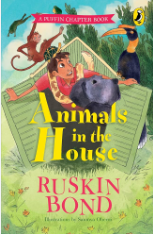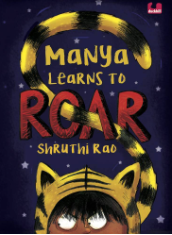From Pictures to Pages: Embarking on New Reading Adventures
Children’s literature plays a pivotal role in early childhood development, serving as a tool for language acquisition, imagination, emotional growth, and cognitive development. A significant milestone in a child’s reading journey is the transition from picture books to chapter books. This shift marks a leap in cognitive abilities, attention span, and engagement with narratives. Understanding this transition helps parents, educators, and authors support young readers during this critical stage.
—Every child is a reader waiting to happen. Start their journey from picture books to chapter books, where imaginations soar and worlds unfold with every word.—
The Role of Picture Books
Picture books are often the first form of literature children encounter. Designed for toddlers and preschoolers, these books feature large, colorful illustrations with minimal text. Their primary purpose is to introduce children to storytelling, vocabulary, and the relationship between images and words.
Key Features of Picture Books
- Illustrations
Illustrations are integral to the story. Examples:
In “The Very Hungry Caterpillar” by Eric Carle, vibrant images help children understand the caterpillar’s transformation and the concept of days of the week.
Similarly, “Gajapati Kulapati” by Ashok Rajagopalan uses bold, colorful illustrations to tell the humorous story of an elephant.
- Simple Text
Text is often repetitive and rhythmic, aiding language development and retention.
Example:
Dr. Seuss’s “Green Eggs and Ham” uses simple, rhyming text that helps children predict and remember words.
- Engagement:
Picture books often involve interactive elements such as lift-the-flap pages or touch-and-feel textures, engaging multiple senses and keeping young readers interested.
Example:
Dear Zoo” by Rod Campbell involves lifting flaps to discover animals.
- Themes
Themes are simple and relatable, focusing on everyday experiences, emotions, and basic concepts.
Example:
Goodnight Moon” by Margaret Wise Brown helps children with bedtime routines and familiarizes them with their surroundings.
The blend of visuals and text in picture books fosters vital reading skills for early literacy. As children develop, their cognitive abilities grow, setting the stage for the next stage of their reading journey.
The Transition to Chapter Books
The transition from picture books to chapter books generally occurs between ages 6 and 8, although this can vary widely. This phase represents a significant shift in reading habits and capabilities. Chapter books, also known as early readers or first readers, contain more text and fewer illustrations, designed for independent reading by children with basic reading skills.
Characteristics of Chapter Books
- Increased Text
Chapter books contain more text, requiring extensive use of reading skills.
Example:
The Magic Tree House” series by Mary Pope Osborne introduces history and adventure with more text and fewer pictures.
- Illustrations
Illustrations are less frequent and central.
Example:
In “The Magic Faraway Tree” series by Enid Blyton, illustrations complement the magical elements, enriching the story without overpowering, inviting young readers into its imaginative world.
- Chapter Structure
Chapters help manage reading in smaller segments, building stamina and maintaining interest.
Example:
Getting Granny’s Glasses” by Ruskin Bond presents concise chapters filled with heartwarming story that resonates with young readers.
- Complex Themes
Themes and plots are more complex, often involving multiple characters and subplots.
Examples:
The Tale of Peter Rabbit by Beatrix Potter introduces themes of disobedience, consequence, and forgiveness through the misadventures of Peter Rabbit in Mr. McGregor’s garden.
Animals in the House” by Ruskin Bond includes multiple adventures and themes of compassion, responsibility, and the bond between humans and animals, making them suitable and engaging for young readers.
Cognitive and Emotional Development
The transition reflects significant developmental strides in several areas:
Cognitive Skills
- Comprehension
Children understand and retain longer narratives, enhancing comprehension.
Examples:
The Boxcar Children” series by Gertrude Chandler Warner follows detailed plots spanning multiple chapters.
“Dust on the Mountain” by Ruskin Bond immerses young readers in the Himalayas, blending rich storytelling with nuanced narratives that foster comprehension and cultural appreciation.
- Memory
Keeping track of characters, settings, and plot developments across chapters exercises a child’s memory.
Example:
Ramona Quimby, Age 8 by Beverly Cleary helps children remember ongoing character developments and scenarios.
- Inference
With fewer visual cues, children infer meaning from text, developing critical thinking.
Example:
The “Rainbow Magic Fairies” series by Daisy Meadows prompts young readers to deduce the emotions and motivations of characters as they accompany the fairies on their enchanting journeys.
- Attention Span
Reading chapter books requires a longer attention span, valuable for academic success and everyday life.
Empathy and Emotional Growth
Engaging with complex characters and plots fosters empathy and emotional intelligence.
Example:
The Gopi Diaries: Coming Home” by Sudha Murty nurtures empathy through their characters and plots, offering young readers tales filled with warmth, kindness, and moral lessons.
- Independence
Chapter books encourage independent reading, promoting self-confidence and a sense of achievement. This independence nurtures a lifelong love for reading.
Strategies for a Smooth Transition
Parents and educators can facilitate a smooth transition from picture books to chapter books:
- Gradual Introduction
Start with transitional books bridging picture and chapter books, such as —
Manya Learns to Roar” by Shruthi Rao serves as excellent transitional book, offering engaging story and visuals that help young readers transition from picture books to chapter books.
“Prince Veera and the Cunning King” by Chitra Soundar is a superb transitional book, featuring captivating story and vibrant illustrations that seamlessly guide young readers from picture books to chapter books.
- Encourage Read-Aloud Sessions
Continue to read aloud to children even after they begin reading independently. This practice supports their listening skills, introduces them to more complex vocabulary, and keeps them engaged with stories.
- Positive Reinforcement
Praise and encourage reading efforts. Celebrate milestones to build confidence. Rewarding with a new book, such as “The Princess in Black” by Shannon Hale, The Famous Five by Enid Blyton, The Puffin Book of Folktales” by Anita Nair etc., can be motivating.
- Create a Reading-Friendly Environment
Provide a cozy, quiet space for reading. A dedicated reading nook with various books makes reading special and enjoyable.
The Role of Educators and Authors
Educators and authors play significant roles in supporting this transition. Educators can mix picture books and chapter books in their curriculum, allowing children to experience both. Classroom discussions about books deepen comprehension and critical thinking.
Authors, on the other hand, can create engaging and age-appropriate content that caters to this transitional phase. Books with relatable characters, humor, and exciting plots can capture the interest of young readers and make the transition smoother.
—Every book is a new journey. Embrace the adventure of transitioning from picture books to chapter books, where young minds flourish with every turn of the page.—
The journey from picture books to chapter books is a crucial chapter in a child’s development. It marks the growth of cognitive and emotional abilities, the expansion of vocabulary, and the beginning of independent reading. By understanding and supporting this transition, parents, educators, and authors can help children develop a lifelong love of reading, setting the foundation for academic success and a rich, imaginative life. This period is not just about reading longer books; it’s about opening new doors to knowledge, empathy, and the vast world of stories waiting to be discovered.
Cite this article in APA as: Shaji, S. From pictures to pages: Embarking on new reading adventures. (2024, June 5). Information Matters, Vol. 4, Issue 6. https://informationmatters.org/2024/06/from-pictures-to-pages-embarking-on-new-reading-adventures/
Author
-
For the past 17 years, I have been employed as a PRT-Librarian at Somerville School Noida. My love for books and storytelling has made me an avid reader, and I take great pleasure in captivating young minds with narrated tales. My primary objective has always been to instill a passion for reading in children, and during library periods, I strive to make the experience engaging through various activities. Writing is another area where my passion lies, and whenever I find the time, I enthusiastically express my thoughts and pen down book reviews as well.
View all posts























